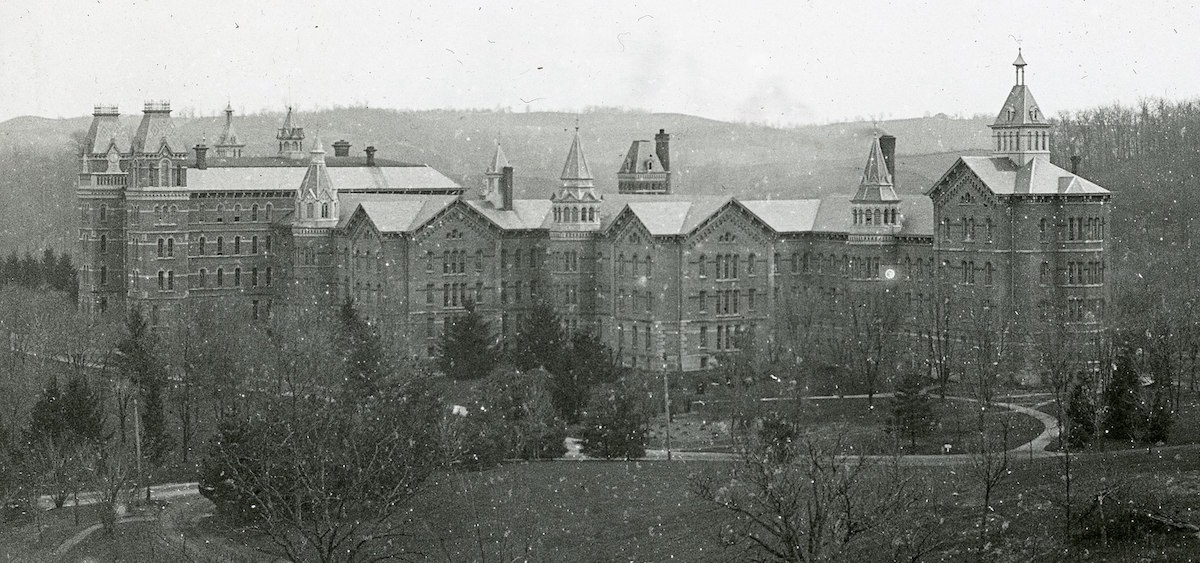Culture

SEO History Center to Present “The Many Phantoms of the Kirkbride Hospitals” June 23
By: Emily Votaw
Posted on:
As a part of their “Athens Asylum: 150 Years of a Healing Landscape” series, the Southeast Ohio History Center will present “The Many Phantoms of the Kirkbride Hospitals” on Saturday, June 23 at 2 p.m. at the Ridges Auditorium (Building 23 on The Ridges campus in Athens, OH). The presentation will be led by Robert Kirkbride, an architect and advocate for the preservation of Kirkbride buildings, which were developed by Dr. Thomas Kirkbride, a physician and advocate for the mentally ill in the 1800s of whom Robert Kirkbride is a direct descendent of.
Above, listen to WOUB’s Emily Votaw’s interview with Tom O’Grady, the executive director of the Southeast Ohio History Center. They discuss the historical importance of the Kirkbride buildings, the current efforts to maintain The Ridges, and the intriguing history of the asylum that sits on a hill above Athens.
Dr. Thomas Kirkbride’s Kirkbride plan buildings were a part of the moral treatment movement in mental health treatment history, which came to the forefront of mental health treatment in the 19th century, based on a psychosocial model that acknowledged the basic humanity of the mentally ill and their ability to recover without the largely barbaric means of mental illness treatment that were utilized heavily before.
Kirkbride buildings were built in a bat-wing shape that is easily identifiable in the remaining portions of the Athens Asylum. This entailed a central building and additional portions of the asylum built onto it in a spreading fashion. The plan entailed exposing patients to bountiful natural light and circulation, which Kirkbride felt was crucial in their treatment. Kirkbride buildings are considered to be the green buildings of their time, naturally conserving resources while providing comfortable quarters that were cool in the summer and warm in the winter.
Although the buildings were popular throughout the mid to late-1800s, they dwindled in popularity as the economic pressure of erecting the enormous structures proved to be too great for some communities, and moral treatment waned in popularity as issues such as asylum overcrowding became common. The development of chlorpromazine (thorazine) in 1950 as the first antipsychotic began the modern trend of treating psychiatric illness through largely medicinal means, eliminating the need for a central, in-patient treatment facility such as an asylum.

